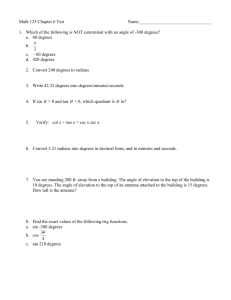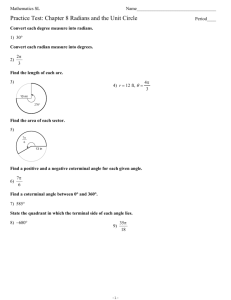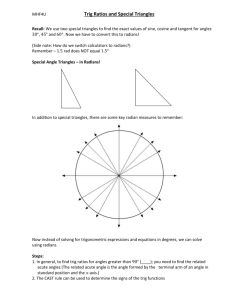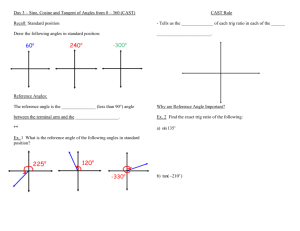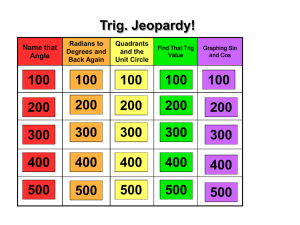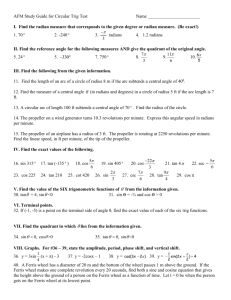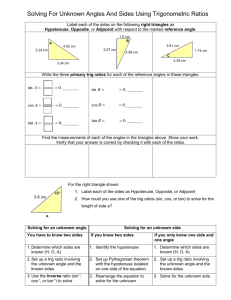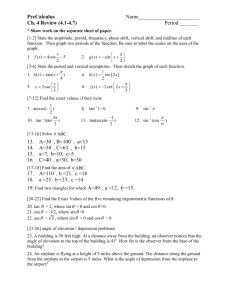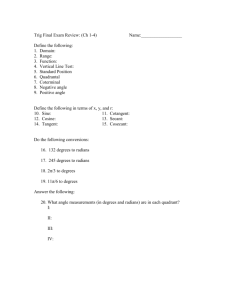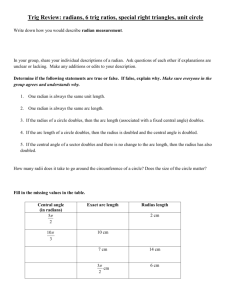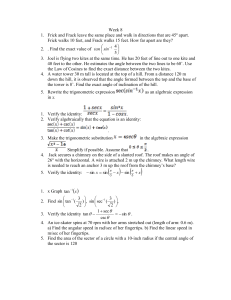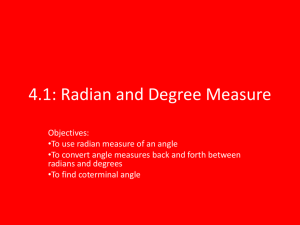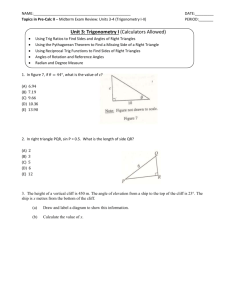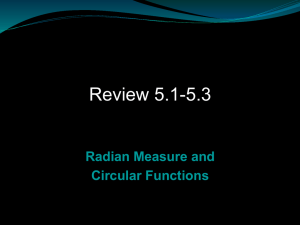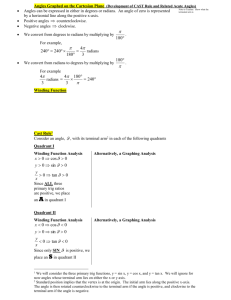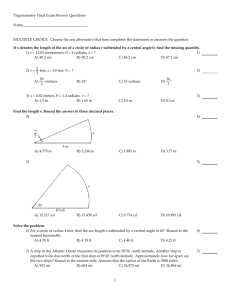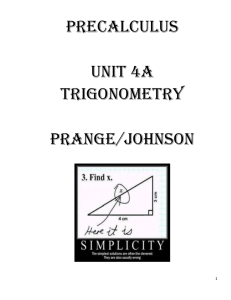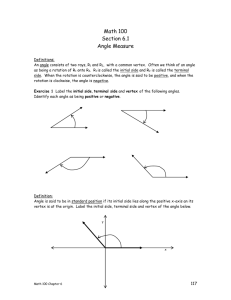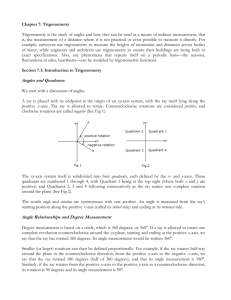8.1-8.4 Review - Swampscott High School
advertisement
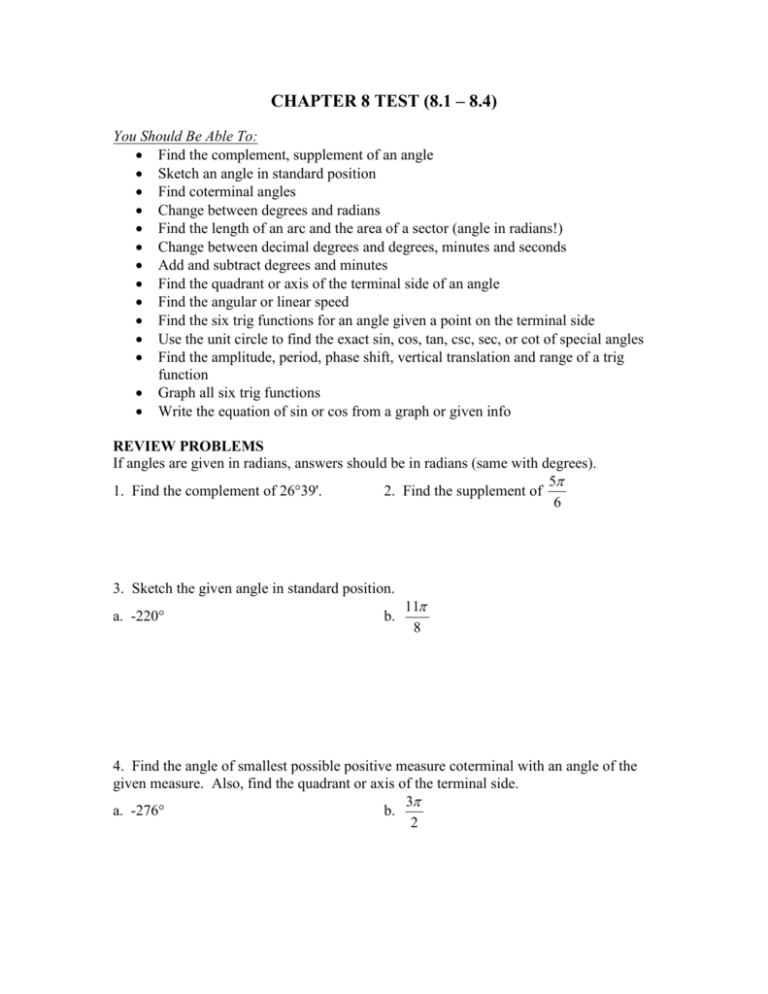
CHAPTER 8 TEST (8.1 – 8.4) You Should Be Able To: Find the complement, supplement of an angle Sketch an angle in standard position Find coterminal angles Change between degrees and radians Find the length of an arc and the area of a sector (angle in radians!) Change between decimal degrees and degrees, minutes and seconds Add and subtract degrees and minutes Find the quadrant or axis of the terminal side of an angle Find the angular or linear speed Find the six trig functions for an angle given a point on the terminal side Use the unit circle to find the exact sin, cos, tan, csc, sec, or cot of special angles Find the amplitude, period, phase shift, vertical translation and range of a trig function Graph all six trig functions Write the equation of sin or cos from a graph or given info REVIEW PROBLEMS If angles are given in radians, answers should be in radians (same with degrees). 5 1. Find the complement of 26°39'. 2. Find the supplement of 6 3. Sketch the given angle in standard position. a. -220° b. 11 8 4. Find the angle of smallest possible positive measure coterminal with an angle of the given measure. Also, find the quadrant or axis of the terminal side. 3 a. -276° b. 2 5. Convert degrees to radians and radians to degrees. 6 a. 800° b. 5 6. The length of the minute hand of a clock is 3 inches. If it has moved 135°, find the length of the arc and the area of the sector formed. (s = rθ and A = ½r²θ). 7. Change to decimal degrees to the nearest thousandth. 41°52'29" 8. Change to degrees, minutes, seconds to the nearest second. 87.392° 9. Find the six trigonometric functions for θ in standard position whose terminal ray passes through (7, -24). 10. Determine what quadrant each angle is in if θ is an angle in the unit circle: a. sin θ > 0 , cos θ < 0 b. sin θ < 0, tan θ > 0 11. Earth revolves on its axis once every 24 hours. Assuming that Earth’s radius is 6400 km, find the following: a. Angular speed of Earth in radians per day b. Linear speed at the North Pole or South Pole c. Linear speed at Quito, Ecuador, a city on the equator NO CALCULATOR FOR THE FOLLOWING PROBLEMS!! Use the unit circle to evaluate each exactly. 12. sin (-60°) 13. csc (240°) 14. tan (480°) 15. cot (315°) 16. sec 5 4 17. cos 3 18. sin 4 3 19. tan 13 6 Give the (a) amplitude, (b) period, (c) phase shift, (d) vertical translation, and (e) range for each of the following. x 20. y 2 sin 1 21. y 3 sec 2 x 4 4 22. y 4 tan( 3x) 2 23. y cos 4 x 3 2 Write the equation of a sine or cosine function having the given graph. 24. sine 25. cosine Graph two periods of each of the following functions. 26. y 2 sin 2 x 2 27. y 2 cos3x 1 28. y sec x 4 29. y = 4 tan x
